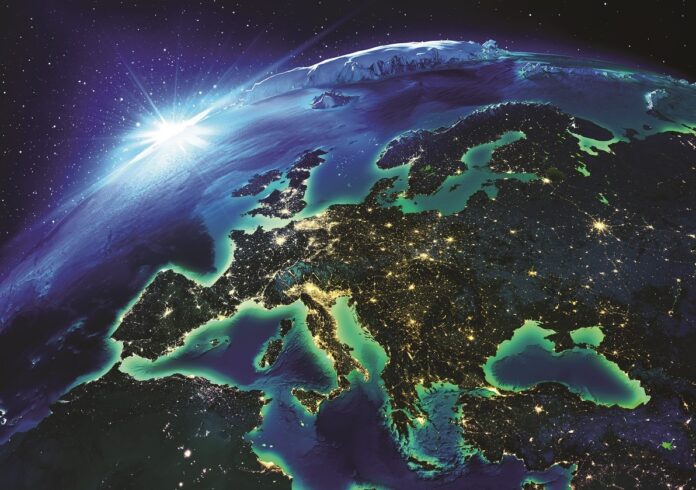By Lis Stedman
The new European Environment Agency (EEA) report on progress on the Sustainable Development Goals (SDGs) across the European Union and EEA cooperating countries has framed the region’s work and progress in terms of these critical targets, showing solid progress in areas related to climate, water and sanitation, and affordable and clean energy.
Importantly, the assessment found that around 90% of EEA member and cooperating countries (known as the 39 Eionet countries) were found to have initiated focused action for SDG6 on water and sanitation, SDG7 on affordable and clean energy, SDG11 on sustainable cities and communities, SDG13 on climate action, and SDG15 on life on land.
The EEA gathered information on areas of environment-related SDG activity from a number of sources, as not all Eionet countries undertook UN Voluntary National Reviews between 2016 and 2020. More data was gathered from the EEA’s NFP/Eionet consultation process earlier this year.
Other sources were: a United Nations Economic Commission for Europe (UNECE) regional survey of 18 EEA member countries; a 2019 EU report on Europe’s approach to the SDGs; the EC’s second environmental implementation review in 2019; the 2019 Europe Sustainable Development Report, published by the Sustainable Development Solutions Network (SDSN) and Institution for European Environmental Policy (IEEP); and the European Sustainable Development Network (ESDN) quarterly report from the end of 2019, on the implementation of the 2030 agenda and SDGs, taking stock of governance mechanisms.
Convergence and divergence
The assessment inevitably found that the individual circumstances and priorities of the countries meant areas of convergence, as well as divergence, in terms of the types of action where SDG efforts are being focused.
The UN’s 2017 Ocean Conference was identified as a key driver for countries’ self-reflection and assessment on progress on protection of the marine environment, which is the main objective of SDG14, the third most-commonly prioritised environment-related SDG.
Preservation of biodiversity is seen as the most important SDG with an environmental dimension
However, the report also stresses that, as set out in the UN Sustainable Development Solutions Network guide to getting started with the SDGs, identifying priority areas does not mean favouring one SDG at the expense of another, but rather identifying areas that are lagging furthest behind to catalyse resources, awareness, and policy actions to spur rapid progress and use those areas as entry points to a broader sustainability transformation.
However, many of the SDGs have environmental aspects of some kind. The report notes that SDG14, life below water, and SDG13, climate action, were two common areas of priority, with the assessment highlighting the latter as reflecting a common need for urgent response.
Thirteen countries have a focus on wastewater management under SDG6, though drinking water quality, water efficiency and managing groundwater reserves were reported as action areas by 5-10 countries.
Some countries are also adopting more innovative approaches: for instance, two countries are supporting family farming to help move towards zero hunger (SDG2), three countries are encouraging the use of recycled water and rainwater harvesting (SDG6), and one country is establishing ‘zero waste territories’ to help move towards sustainable consumption and production (SDG12).
The focus on environmental priorities is to an extent reflected in the government bodies tasked with overseeing SDG reporting to the UN. The report found that the designated national focal points for reporting in 11 Eionet countries are their Ministries of Environment, whereas, in another six, the responsibility is shared between Ministries of Environment, Ministries of Foreign Affairs, or their Permanent Missions to the UN.
In countries that have assigned their Ministries of Environment as the national focal points to the UN’s 2030 Agenda, “the significance of the environmental dimension of the SDGs could be considered more prominent”, the report concludes.
Global comparison
The EEA also examined the overall progress across the world with meeting SDG targets, and found the top 10 were all Eionet countries. This group also represents 20 of the top 25 countries globally.
The report looks in depth at action across all Eionet countries. As an example, one of the world leaders, Finland, is focusing on transforming linear to circular economies, using virgin materials sparingly, and making reuse and recycling the norm. The country’s key themes include aquatic ecosystems, and its membership of the Arctic Council drives a call for urgent action to meet the Paris climate accord and SDG13 targets. The country has engaged extensively with a wide range of stakeholders and has a national Citizens’ Panel for Sustainable Development, though it reports stakeholder conflicts of interest as an issue.
Norway, with its extensive coastline, has a focus on responsible use and protection of oceans and the marine environment (SDG13). Poland has a focus on increasing available water resources (SDG6), and the Netherlands has identified the quality of groundwater, surface water and coastal waters as being under considerable pressure.
Serbia, at the far end of the Eionet table and one of the cooperating countries, views achieving the SDGs as part of its progress towards EU membership. Its focus areas are harmonisation with the EU acquis, international standards, and implementing six priority areas that include environmental protection and climate change, which are identified for support in coming years.
There is also a special focus on investments in infrastructure for processing waste as well as reconstruction and modernisation of public facilities as a part of energy efficiency efforts, touching on SDGs 2, 6, 7, 9, 12 and 13. Preservation of biodiversity is seen as the most important SDG with an environmental dimension, and, because of local circumstances, emergency management and resilience to natural disaster risk reduction is becoming a priority.









